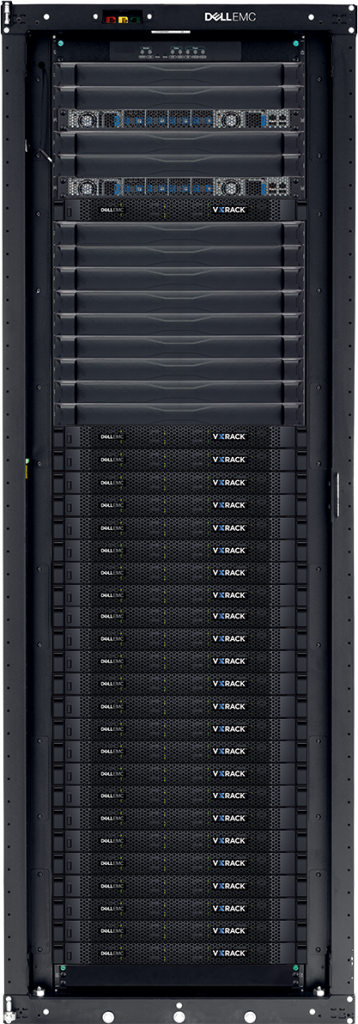The launch of VxRail Appliances pioneered a new product development, go-to-market and selling approach, making them one of our company’s fastest growing solutions. Today, VxRail is winning in the hyper-converged appliance space because heritage EMC, VMware and Dell teams, as Dell Technologies, have collaborated closely on a common solution, built on market-leading technologies, to deliver the easiest and fastest way for customers to extend their VMware environments.
Based on customer feedback and adoption, it only makes sense to bring this model to Dell rack scale hyper-converged infrastructure (HCI). The leaders in servers, storage and virtual computing have joined together once again to engineer the Dell VxRack System with SDDC. For customers standardized on VMware, the new VxRack SDDC, based on the Dell PowerEdge platform and powered by VMware Cloud Foundation, offers a complete, turnkey software-defined data center that delivers a rack scale hyper-converged solution to simplify the journey to private cloud.
Dell PowerEdge technology expands flexibility and enhances performance of VxRack SDDC
The inclusion of the world’s number one server platform, PowerEdge, into VxRack SDDC is testament to our vision of Dell being stronger and better together. As an enterprise class Software Defined Storage solution, VxRack SDDC requires a highly reliable, high performance and extremely manageable foundation that only Dell PowerEdge servers can provide. In addition, it requires an ability to innovate fast to deliver real customer value and leverage our world-class supply chain to provide quality, flexibility and speed of delivery while offering our customers increased choice with better performance – including higher core counts, increased memory, and high performance all-flash.
Tight VMware integration is the center of gravity
VxRack SDDC, powered by VMware Cloud Foundation, is unique in the industry as the only turnkey SDDC hyper-converged solution for VMware engineered to support both traditional and cloud-native workloads running in almost any environment. VMware Cloud Foundation is the most complete and only unified VMware SDDC platform available today. By natively integrating the best of VMware’s industry leading infrastructure software (vSAN, vSphere, and NSX) with VMware SDDC Manager for full lifecycle automation, VMware Cloud Foundation dramatically simplifies deployment and enables a seamless operational experience with VMware SDDC. Within VxRack SDDC, customers have the ability to provision a subset of the infrastructure for multi-tenant isolation and security. And, similar to VxRail Appliances, customers can continue to leverage their known and proven tools within their environment such as vCenter Server and the vRealize Suite.
Complete, turnkey SDDC solution with total lifecycle management and world class support
In addition to integrated software, VxRack SDDC comes as a complete physical infrastructure package including racks, networking, physical asset security and cable management. VxRack SDDC supports as few as 8 nodes and scales linearly up to a maximum configuration of 192 nodes across 8 racks allowing customers to take full advantage of hyper-converged economics to start small and grow as their business demands. VxRack SDDC provides full lifecycle management for the entire solution from Dell including comprehensive service and support offerings for investment protection on the path to modernizing the data center.
Dell’s hyper-converged options
We understand that one size does not fit all for customers. VxRail Appliances and VxRack SDDC represent different turnkey hyper-converged options to easily deploy and extend VMware environments from their core data center to edge locations.
The industry’s broadest portfolio of HCI solutions from Dell is on track to become the market leader thanks to strong customer adoption – a great validation that our strategy is working to help address our customers’ key challenges.
For more thoughts on the value of the combined Dell for HCI, check out Trey Layton’s blog from Dell World, and, for more on VMware Cloud Foundation, check out Chad Sakac’s blog here.

